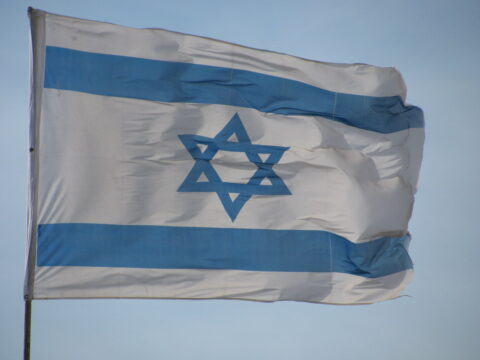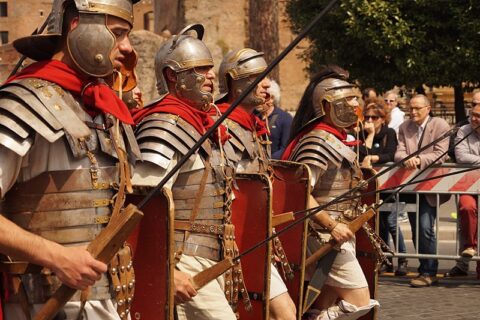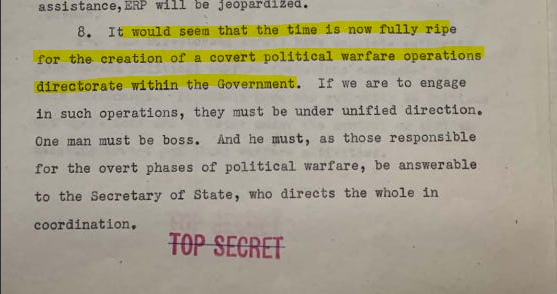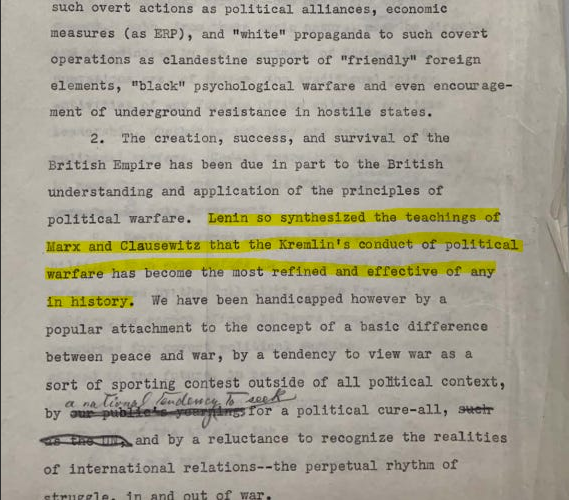The Tank Museum
Published Nov 17, 2023It’s not easy to hide a tank. But over the years, military commanders have developed ways to disguise, cover and conceal the presence of their tanks from the enemy. This video is about the “art of deception” – and how, since World War One, through World War Two and into the present day, the science of tank camouflage has evolved to meet the conditions and threats of the contemporary battlefield.
00:00 | Intro
01:38 | WWI
06:26 | WW2
13:42 | Post War
19:40 | Conclusion
(more…)
February 21, 2024
Can you make a tank disappear? The Evolution of Tank Camouflage
February 20, 2024
Belt-fed Madsen LMG: When the Weird Get Weirder
Forgotten Weapons
Published Nov 15, 2023First produced in 1902, the Madsen was one of the first practical light machine guns, and it remained in production for nearly 5 decades. The Madsen system is a rather unusual recoil-operated mechanism with a tilting bolt and a remarkably short receiver. The most unusual variation on the system was the belt-fed, high rate-of-fire pattern developed for aircraft use. This program was initiated by the Danish Air Force in the mid 1920s, and several different patterns were built by the time World War Two erupted.
The model here was actually a pattern that was under production for Hungary when German forces occupied Denmark. Taking over the factory, they continued the production and the guns went to the Luftwaffe for airfield defensive use.
In order to use disintegrating links instead of box magazines, some very odd modifications had to be made to the Madsen. One set of feed packs are actually built into the belt box itself, and the gun cannot function without the box attached. The only feasible path for empty link ejection is directly upwards, and so a horseshoe-shaped link chute was attached to the top cover, guiding links up over the gun and dropping them out the right side of the receiver. Very weird!
While several thousand of these were made under German occupation, very few survive today and they are extremely rare on the US registry.
(more…)
February 19, 2024
The CIA’s covert operations … as inspired by Vladimir Lenin
Along with most people who’ve been paying attention to history since the start of the Cold War, I hold the CIA in dubious regard. They seem to have been involved in so many underhanded escapades in countries around the world — certainly by reputation, if not in reality — that they stand almost in direct opposition to how most Americans liked to think of their country. Jon Miltimore thinks that among their inspirations was the founder of the Soviet Union himself:
I bring all of this up because I recently came across an old document of some significance that I’d never heard of before titled, “The Inauguration of Organized Political Warfare“.
It was authored by George Kennan, the State Department Policy Planning Director who’d go on to be a successful US diplomat, for the National Security Council (which governed the CIA), and the document explained how the US government had to mobilize national resources “for covert political warfare” to combat the Soviet Union.
Kennan was not, in my opinion, a bad man. He had good instincts and sound motives, at least compared to others in the US intelligence apparatus. He was an early opponent of the Vietnam War and later was one of the first diplomatic leaders to warn against the US policy of expanding NATO up to Russia’s doorstep, something he predicted would be “the most fateful error of American policy in the entire post-cold-war era”.
That said, it’s clear that Kennan was not appalled by the Soviet Union’s use of covert political warfare. He was impressed by it.
“Lenin so synthesized the teachings of Marx and Clausewitz that the Kremlin’s conduct of political warfare has become the most refined and effective of any in history,” Kennan wrote in the document.
We have been handicapped however by a popular attachment to the concept of a basic difference between peace and war, by a tendency to view war as a sort of sporting context outside of all political context, by a national tendency to seek for a political cure-all, and by a reluctance to recognize the realities of international relations — the perpetual rhythm of [struggle, in and out of war].
The document is fascinating because it appears to mark the genesis of the US government’s first formal steps into the world of political warfare — a well-documented history that includes toppling governments, assassinating world leaders, tipping elections, and torturing enemies.
All of these efforts, of course, initially targeted external parties and countries to serve “the national interest”.
This is no longer the case. The CIA, NSA, and other intelligence agencies no longer restrict their covert political warfare to foreign states, and I’m not talking about just Operation Mockingbird and other domestic propaganda efforts.
The CIA is clearly putting its thumb on the scales of US elections in ways that should terrify all Americans.
February 18, 2024
German Counterattack in Pomerania – WW2 – Week 286 – February 17, 1945
World War Two
Published 17 Feb 2024The Germans finally launch a counterattack into the Soviet flanks, but it does not go as well as was as hoped. The Siege of Budapest comes to an end, also not well for the Germans. The Soviets have now also surrounded Breslau. In Burma, the Allies cross the Irrawaddy River, in the Philippines the fight for Manila continues, and in the Pacific preparations are underway for an American invasion of Iwo Jima Island.
01:50 The fight for East Prussia
04:08 German counterattack in Poland
07:00 Breslau Surrounded
07:57 The Siege of Budapest
09:14 Operation 4th Term in Italy
10:07 Operation Veritable Continues
11:36 Allies cross the Irrawaddy
14:43 The Fight in the Philippines
17:52 Preparations for Iwo Jima
(more…)
Does the Chieftain Fit Into … a Ford Model T
The Chieftain
Published Nov 19, 2023Filmed during a down-moment on a maintenance day at the Ontario Regiment Museum. The Model T is small and so old that I have to ask someone else at the end of the video how to drive it.
(more…)
February 17, 2024
Breda 37: Italy’s Forgotten Heavy Machine Gun
Forgotten Weapons
Published Nov 11, 2023The Breda Model 37 was Italy’s standard heavy machine gun (which meant a rifle-caliber gun fired only from a tripod) during World War Two. It was chambered for the 8x59mm cartridge, as Italy used a two-cartridge system at the time, with 6.5mm for rifles and the heavier 8mm for machine guns to exploit their longer effective range. Production began in 1937 and continued until the end of the war, with a batch being made for German use after the Italian armistice in 1943. Pre-war it was also sold to Portugal as the m/938. It remained in Italian use after the war as well, eventually replaced by the MG42/59.
The Breda 37 is a durable, reliable, and overall very good design. It uses 20-round feed strips, with the quite unusual feature of placing fired cases back into the strips rather than ejecting them out of the gun. It is a relatively unknown gun today, but this is not because of any inferiority on its part.
(more…)
QotD: Lessons for today from the decline of the Western Roman Empire
What lessons can we draw from this book [The Grand Strategy of the Roman Empire by Edward Luttwak] for today? There are many, but I will leave you with one. Reading about the Roman client state system gave me an uncomfortably familiar feeling. Can we think of another empire that outsources governance to vestigial polities that pretend to be sovereign, and even get called “allies”, but are actually clients? An easy example is the Warsaw Pact. A more controversial one is present-day America and her dependencies. Consider Canada: a normie friend of mine once remarked that Canada pretended to be an independent country, but that if the present world were translated into a computer strategy game its territory would be shaded in the same color as America’s. Indeed, Canada’s sovereignty is exceedingly virtual — it exists only so long as it isn’t tested, just like the sovereignty of a Roman client. Canada is self-governing and self-administering, it passes its own laws and collects its own taxes. But if its foreign policy objectives ever diverged one micrometer from America’s, then Canada would cease to exist. Seriously, imagine Canada offering to host a Chinese or Russian military base and what would immediately occur. There is a real sense in which America rules the land that we know as “Canada”, but has outsourced governance to local elites in a highly federalized structure.
Luttwak has a charmingly racist bit about how some client states have the IQ and sophistication to understand the true nature of the arrangement, while others are too dumb or barbaric to remember who’s boss without having their faces regularly rubbed in it. In the Roman case, the former camp contained the various Hellenistic kingdoms in Asia Minor and the Levant, who didn’t need legionaries standing around and supervising them, because they could imagine the existence of those legionaries and what they would do to them if provoked. The latter camp included many of the Germanic tribes, who tended to forget their place if the legions weren’t garrisoned within eyeshot, and even then would rise up in fruitless rebellion every couple of generations. We can make this marginally less racist by positing something more like a spectrum of how tolerable the client arrangement was, and consequently a spectrum of how coercive it had to be. The Greeks were relatively compatible culturally with the Romans, and the warrior spirit of their ancestors had been sufficiently sanded down that they didn’t mind being told what to do. The Germans were more foreign, and also retained the barbarian’s yearning for freedom, so a careful eye had to be kept on them.
A true cynic might think that there was something similar going on with America’s imperial dependencies … sorry, with America’s “allies”. There are no American garrisons in Canada, because the Canadians are culturally-compatible, and also because they’ve been thoroughly cowed and do not dream of an independent national destiny. But look overseas, for instance at some of our Middle Eastern “allies”, and you will see a situation more analogous to the Germanic tribes. What a coincidence that these same “allies” host a much heavier American military presence! Even here, however, the situation isn’t strictly coercive, and insofar as it is, the coercion is mostly outsourced to local elites. Those elites, in turn, can mostly be handled with carrots: the imperial power subsidizes their trade and security arrangements, not to mention keeps them in charge of their respective countries! The Romans commonly rewarded loyal clients with citizenship and a cushy sinecure for a job well done. It would be rude of us to do otherwise.
Maybe this was already obvious to everyone else, but reading the “rules-based international order”1 as a concealed hegemon/client system feels a bit like having the skeleton key to understanding current events. Like why do European countries so often act in ways contrary to their own economic or geopolitical self-interest, but consonant with America’s interest? How do the political and business elites of these countries maintain such an impressive unified front in the face of popular discontent? Why do the rulers of all these very different countries have seemingly identical tastes, worldviews, and mannerisms? What is the meaning of “populism,” and why do people treat it like it’s a single, consistent thing, despite the fact that “populist” parties in different countries often seek diametrically opposite policies?
Just pretend, imagine with me, that these European “allies” are client kingdoms. They are permitted a certain amount of latitude, but when the chips are down they do not have an independent foreign policy. Their ruling classes are client rulers that administer certain territories, and there is tacit agreement with the imperial overlord on what they may and may not do. Over time, the client rulers identify less and less with their countrymen, more and more with their counterparts in other client states, and most of all with the distant metropole, whose social approval they desperately desire. The “populists” are simply the anti-imperial party, in whatever country. The thing the “populists” have in common is a desire to be free of the suffocating imperial embrace,2 but they all have a thousand different stupid ideas about what to do with that freedom. This includes the “populists” in the United States itself, by the way. The American Empire is called that because it started here, but it has long-since burst free of the host in which it incubated, and the rot of our own political institutions can be understood as our transformation into the biggest client kingdom of them all.
None of what I’ve said above is meant to be a value judgment. I think many people resist the notion that America is an empire because empires are “bad” and we’re obviously the good guys. But others, including myself not too long ago, resist it because we have an overly-simplistic notion of what an empire looks like, especially what it looks like from the inside. Empires exist on a spectrum — America’s subjects certainly have more ability to act independently than Rome’s did. But many empires also go to some lengths to conceal their true nature. Around the time of the birth of Christ, the official story in many of the lands ruled by Rome was that Rome was merely their largest trading partner and a staunch military ally. Some of them might even have believed it.
John Psmith, “REVIEW: The Grand Strategy of the Roman Empire by Edward Luttwak”, Mr. and Mrs. Psmith’s Bookshelf, 2023-11-13.
1. The rules-based international order which has no rules, isn’t based, and opposes order.
2. They may also have in common the payments made to their bank accounts by the empire’s enemies.
February 16, 2024
Regional Power: North Korea
Army University Press
Published Feb 13, 2024This film examines the current political and military situation in North Korea. Subject matter experts discuss Korean history, DPRK current affairs, and KPA military doctrine. Topics include the rise of the Kim family to political leadership of the DPRK, its influence in the region, and how the U.S. works in partnership with the Republic of Korea.
February 15, 2024
Israel as an “Eschatological Garrison State”
Big Serge outlines why Israel was compelled by its geostrategic position to react as strongly as possible to the October 7th atrocities along the southern border with Gaza:

“Israeli flag, Tel Aviv, Star of David” by Tim Pearce, Los Gatos is licensed under CC BY 2.0 .
It is almost impossible to find a dispassionate analysis of the Israeli-Arab conflict, simply because it sits directly upon a concatenation of ethno-religious fault lines. Palestinians are the object of concern for many of the world’s nearly two billion Muslims, particularly in the Arab world, who tend to view Gaza’s suffering and humiliation as their own. Israel, on the other hand, is a subject of rare agreement between American evangelicals (who believe that the nation state of Israel has relevance to Armageddon and the fate of Christianity) and the more secular American governing blob, which treats Israel as an American outpost in the Levant. To this, we can add the emerging religion of anti-colonialism, which views Palestine as something like the next great liberation project, akin to ending apartheid in South Africa or Gandhi’s campaign for Indian independence.
My goal is not to convince any of the aforementioned people that their views are wrong, per se. Instead, I would like to argue that, despite these many powerful emotional-religious currents, much of the Israeli-Arab conflict can be understood in fairly mundane geopolitical terms. Despite the enormous psychological stakes that billions of people have in the subject matter, it still unfolds itself to a relatively dispassionate analysis.
The root of the problems lay in the peculiar nature of the Israeli state. Israel is not a normal country. By this, I mean neither that it is a special, providential country (as an American evangelical might say), nor that it is a uniquely wicked root of all evil. Rather, it is extraordinary in two important ways that relate to its function and geopolitical calculus, rather than its moral content.
First, Israel is an Eschatological Garrison State. This is a particular form of state which perceives itself as a sort of redoubt against the end of all things, and accordingly becomes highly militarized and highly willing to dispense military force. Israel is not the only such state to have existed in history, but it is the only obvious one extant today.
A historical comparison may help explain. In 1453, when the Ottoman Empire at last overran Constantinople and brought an end to the millennia-old Roman imperium, early medieval Russia found itself in a unique position. With the fall of the Byzantines (and the previous schism with western papal Christianity), Russia was now the only Orthodox Christian power remaining in the world. This fact created a sense of world-historic religious siege. Surrounded on all sides by Islam, Roman Catholicism, and Turko-Mongol Khanates, Russia became a prototypical Eschatological Garrison State, with a high degree of cooperation between Church and State and an extraordinary level of military mobilization. The character of the Russian state was indelibly formed by this sense of being besieged, of being the last redoubt of authentic Christianity, and the consequent need to extract a high volume of manpower and taxes to defend the garrison state.
Israel is much the same, though its sense of eschatological terror is of a more ethno-religious sort. Israel is the only Jewish state in the world, founded in the shadow of Auschwitz, besieged on all sides by states with which it has fought several wars. Whether this justifies the kinetic aspects of Israeli foreign policy is not the point. The simple fact is that this is Israel’s innate self conception. It is an eschatological redoubt for a Jewish population that sees itself as having nowhere else to go. If one refuses to acknowledge the central Israeli geopolitical premise — that they would do anything to avoid a return to Auschwitz — one will never make sense of their actions.
Artillery! A WW2 Special
World War Two
Published 14 Feb 2024The modern artillery of the Great War was responsible for the vast majority of military deaths in that conflict, but how has artillery developed from that war to this one? Today we take a look at some of the artillery of WW2.
(more…)
Tune in for the propaganda, stay tuned for the epic meltdowns
Are you old enough to remember when “news” in the legacy media was, well, calmly presented factoids (accurate or not) that might get you upset, but the emotional content wasn’t heightened or enacted by the hairspray heads in front of the camera? Those days are long enough past that they might never have happened, as Chris Bray illustrates:
Spend a minute of your life looking at a chart that shows how much countries spend on their militaries as a percentage of GDP. The US spends about 3.5%, while Germany spends about 1.4%. For years, hawks have argued that the US should spend 4% of GDP on defense, in a well-known debate about reasonable funding for security. NATO members commit to a target of 2% or better, and many don’t make that goal. Donald Trump says he told the leaders of NATO countries that they should make or beat their military spending targets to ensure their own security, and as a negotiating ploy he poked at them and said that he wouldn’t bother to defend people who wouldn’t bother to pay for their own defense.
You can agree with his argument or disagree with his argument, and make whatever argument you want about the carefulness or recklessness of Trump’s rhetorical style, but none of this is obscure.
And so now we’re living through an ORANGE MAN LITERALLY HITLER CRISIS, as Orange Satan Drumpf tells the Putin Devil to absolutely MURDER all the Europeans and the world teeters in agony at the very brink of a harvest of slaughter. Here, let Forbes just give you the news, straight and factual and to-the-point:
THE MEAN MAN SAYING FOR THE PUTIN DEVIL TO MURDER ALL THE LITTLE BABIES professional journalists calmly explain, absolutely biting through the rubber nipple on their pacifiers. Sackcloth, ashes, endlessly refillable SSRI prescription: journalist starter kit.
In the car a few minutes ago, I turned on the radio mid-interview to hear a hysterical NPR anchor begging a European pundit to agree that Trump is a vicious monster, and the European — I missed his name — sighed and said that look, this is a debate that we’ve been having for a while, it’s a pretty normal discussion. BUT DON’T YOU THINK HE’S AN ORANGE MURDER DEVIL!?!?!? Then they played an important clip of Slow Joe Biden slurring and fake-shouting about Trump’s un-American cruelty, sounding almost as angry as he was when he talked about how many actual chips they put in the potato chip bags. This is why I listen to NPR in short bursts, like a gun run from an A-10. Brrrrrrrrrt, and off.
But what’s inescapable about this extremely dull moment, yet again, is that an allegedly elite layer of political, academic, and media figures are taking something routine and willfully inflating it into a five-alarm global crisis. It … must be a day ending in -y? Nothing is ever bad, or disagreeable, or arguable; every event is The Absolute Worst. Every development must be discussed in hyperemotional terms; every objectionable act is devastating, terrifying, destructive, ruinous, treasonous, unforgivable. No one disagrees with us; rather, they are ENEMIES OF EVERYTHING WE STAND FOR!!!!!
The Big Picture – NATO: Partners in Peace (1954)
Army University Press
Published Nov 13, 2023NATO: Partners in Peace follows the creation and impact of the North Atlantic Treaty Organization (NATO). Created in April 1949 with twelve founding members, this organization’s goal was to protect the inherent rights of individual states through collective defense. In this episode from The Big Picture series, General Dwight D. Eisenhower offers a speech before he deploys to Europe to become the first Supreme Allied Commander Europe (SACEUR). This is followed with footage of the buildup and training of European forces. Once Eisenhower leaves NATO to campaign for the presidency, General Matthew Ridgway replaces him as NATO commander. One significant problem NATO forces faced was the fact that each nation had its own weapon systems and ammunition, an issue the U.S. wanted to address with the standardization of the 7.62mm cartridge. Perhaps as a deterrent to the Soviet Union, NATO: Partners in Peace depicts new weapons that could be used against a large enemy force such as remote-controlled missiles, napalm bombs, and the massive atomic cannon.
February 14, 2024
Soviet World War Two Swords? The M1927 Shashka
Cossack forces have long been a key cavalry element of the Russian military, and this did not change during the Soviet era. The Cossacks had their own rather distinctive style of sword, the shashka, and the Red Army maintained the tradition of issuing them to Cossack cavalry troopers. In 1927, a new pattern was adopted, and it was produced and issued from 1928 until 1946. The shashka has a slightly curved, single-edged blade and no handguard. The model 1927 military type was initially made with a rather decorative pommel, but this was simplified to just a plain 5-pointed star as German advances into Russia really stressed Soviet industrial production. However, production and issue of the shashka continued uninterrupted throughout the war.
Originally there were separate trooper and officer versions of the model 1927, with the trooper version including the ability to stow the trooper’s Mosin-Nagant rifle bayonet on the side of the shaskha scabbard. As cavalry, the Cossacks were not expected to carry their rifles with bayonets fixed, and this served in lieu of a bayonet sheath. By 1944 this feature was omitted, as the M91/30 was replaced by the M38 and M44 carbines and submachine guns, which did not use bayonets.
The decorations returned to the M1927 shashka in 1945, with a series made for the Victory Day parade celebrating the defeat of Germany. Today’s example is one of these, and in beautiful condition.
February 13, 2024
“I am a proud member of the Airfix generation”
I didn’t realize that Peter Caddick-Adams is the same age as me, but it does seem that our interests pretty much ran parallel for a while:

Re-enactors in Roman legionary gear, 19 May, 2021.
Original photo from https://pxhere.com/en/photo/883133 via Wikimedia Commons.
I am a proud member of the Airfix generation. The desire (less so the ability) to assemble and paint plastic model kits of aircraft, tanks and ships hit me squarely between the eyes on my tenth birthday in 1970. Several aunts and uncles had arrived at the same solution to bring out my inner Spitfire on the same day. Who needed the high of polystyrene cement and Humbrol enamel when you could refight D-Day across your bedroom floor with kits costing as little as 1/6d? Although Airfix was the premium producer of scale kits, other competing brands included Frog, Tamiya, Monogram, Hasegawa and Revell. I wish I knew what I did with them all, but many of the aircraft I recall casting out of upstairs windows, set on fire by match and candle. Looking back, I can see how it sewed the seeds of my becoming a professional military historian decades later. From little acorns, eh?
Two years later, I discovered I was interested in anything historical when my parents packed us into a train (great excitement in itself) for a trip to London. Although long past the days of steam, I can remember my father walking me down to thank the engine driver for getting us safely into Euston and then the true adventure began. The arrival at the British Museum to see the Tutankhamun Exhibition, which ran from March to December 1972. When it ended, besides the young Caddick-Adams, 1.6 million visitors had passed through the exhibition doors, making it the most popular attraction in the museum’s history. My favourite art class activity thereafter altered from drawing Spitfires and Messerschmitts chasing each other across every page to depicting ghostly, golden burial masks. Ever since, I have held an unbelievably soft spot for the old BM, always remembering that due to its vastness, it is best to go there to see something specific, rather than wander hither and thither, lost in its many treasures.
Then in 1977, when studying Ancient History for “A” Level, it was the turn of the Royal Academy in Piccadilly to capture my imagination with its Pompeii AD 79 exhibition. Mosaics, personal possessions, wall paintings and plaster casts of Romans and their animals caught in the moment of death as toxic gases, ashes, molten rock and pulverized pumice froze them forever, like insects in amber, likewise left a profound mark on my understanding of the bigger wheels of history.
The other day I was more than happy to be reunited with my old friend, the British Museum, this time hosting another Roman exhibition, which promises to be every bit as impactful as the Tutankhamun and Pompeii antecedents. Just unveiled, Legion: Life in the Roman Army is an inspired portrayal of an institution which numbered around 450,000 at its peak in AD 211 (33 legions and c. 400 auxiliary regiments), although numbers always fluctuated. The first amazing realisation is how little archaeological evidence remains of this vast organisation that endured for many centuries. The second is how well the scanty remnants in this exhibition have been preserved and interpreted.
Here, the British Museum has assembled the best surviving examples of arms, armour and personal possessions from collections around the world, in over 200 artefacts from 28 lenders. Though we view gleaming bronze helmets, swords long-rusted into scabbards, a pile of near-fossilised chainmail, it is incredible to think that there is only one intact example remaining of all those hundreds of thousands of rectangular and curved legionary shields (called a scutum), still bearing its decoration and crimson dye. This one comes from Syria.
There are some fine funerary carvings of Roman officers from around the empire, then we encounter some of the battlefield detritus including breastplate armour found near Kalkriese, in the Teutoburgerwald of Lower Saxony. This is where a coalition of Germanic tribes led by a rebel chieftain called Arminius ambushed 3 legions led by Publius Quinctilius Varus in 9 AD. The story of discovering this battle terrain was as dramatic as the assault itself. It was the result of a meticulous British soldier who combed an area north of his base at Osnabrück with a metal detector in 1987. Major Tony Clunn recorded each discovery of Roman coins and sling shot, making it possible to reconstruct the route taken by Roman legionaries under Varus and determine where they were ambushed and massacred.
QotD: War elephant logistics
From trunk to tail, elephants are a logistics nightmare.
And that begins almost literally at birth. For areas where elephants are native, nature (combined, typically, with the local human terrain) create a local “supply”. In India this meant the elephant forests of North/North-Eastern India; the range of the North African elephant (Loxodonta africana pharaohensis, the most likely source of Ptolemaic and Carthaginian war elephants) is not known. Thus for many elephant-wielding powers, trade was going to always be a key source for the animals – either trade with far away kingdoms (the Seleucids traded with the Mauyran Indian kingdom for their superior Asian elephants) or with thinly ruled peripheral peoples who lived in the forests the elephants were native to.
(We’re about to get into some of the specifics of elephant biology. If you are curious on this topic, I am relying heavily on R. Sukumar, The Asian Elephant: Ecology and Management (1989). I’ve found that information on Asian elephants (Elephas maximus) much easier to come by than information on African elephants (Loxodonta africana and Loxodonta cyclotis).)
In that light, creating a breeding program – as was done with horses – seems like a great idea. Except there is one major problem: a horse requires about four years to reach maturity, a mare gestates a foal in eleven months and can go into heat almost immediately thereafter. By contrast, elephants reach adulthood after seventeen years, take 18-22 months to gestate and female elephants do not typically mate until their calf is weaned, four to five years after its birth. A ruler looking to build a stable of cavalry horses thus may start small and grow rapidly; a ruler looking to build a corps of war elephants is looking at a very slow process. This is compounded by the fact that elephants are notoriously difficult to breed in captivity. There is some speculation that the Seleucids nonetheless attempted this at Apamea, where they based their elephants – in any event, they seem to have remained dependent on imported Indian elephants to maintain the elephant corps. If a self-sustaining elephant breeding program for war elephants was ever created, we do not know about it.
To make matters worse, elephants require massive amounts of food and water. In video-games, this is often represented through a high elephant “upkeep” cost – but this often falls well short of the reality of keeping these animals for war. Let’s take Total War: Rome II as an example: a unit of Roman (auxiliary) African elephants (12 animals), costs 180 upkeep, compared to 90 to 110 upkeep for 80 horses of auxiliary cavalry (there are quite a few types) – so one elephant (with a mahout) costs 15 upkeep against around 1.25 for a horse and rider (a 12:1 ratio). Paradox’s Imperator does something similar, with a single unit of war elephants requiring 1.08 upkeep, compared to just 0.32 for light cavalry; along with this, elephants have a heavy “supply weight” – twice that of an equivalent number of cavalry (so something like a 2:1 or 3:1 ratio of cost).
Believe it or not, this understates just how hungry – and expensive – elephants are. The standard barley ration for a Roman horse was 7kg of barley per day (7 Attic medimnoi per month; Plb. 6.39.12); this would be supplemented by grazing. Estimates for the food requirements of elephants vary widely (in part, it is hard to measure the dietary needs of grazing animals), but elephants require in excess of 1.5% of their body-weight in food per day. Estimates for the dietary requirements of the Asian elephant can range from 135 to 300kg per day in a mix of grazing and fodder – and remember, the preference in war elephants is for large, mature adult males, meaning that most war elephants will be towards the top of this range. Accounting for some grazing (probably significantly less than half of dietary needs) a large adult male elephant is thus likely to need something like 15 to 30 times the food to sustain itself as a stable-fed horse.
In peacetime, these elephants have to be fed and maintained, but on campaign the difficulty of supplying these elephants on the march is layered on top of that. We’ve discussed elsewhere the difficulty in supplying an army with food, but large groups of elephants magnify this problem immensely. The 54 elephants the Seleucids brought to Magnesia might have consumed as much food as 1,000 cavalrymen (that’s a rider, a horse and a servant to tend that horse and its rider).
But that still understates the cost intensity of elephants. Bringing a horse to battle in the ancient world required the horse, a rider and typically a servant (this is neatly implied by the more generous rations to cavalrymen, who would be expected to have a servant to be the horse’s groom, unlike the poorer infantry, see Plb. above). But getting a war elephant to battle was a team effort. Trautmann (2015) notes that elephant stables required riders, drivers, guards, trainers, cooks, feeders, guards, attendants, doctors and specialist foot-chainers (along with specialist hunters to capture the elephants in the first place!). Many of these men were highly trained specialists and thus had to be quite well paid.
Now – and this is important – pre-modern states are not building their militaries from the ground up. What they have is a package of legacy systems. In Rome’s case, the defeat of Carthage in the Second Punic War resulted in Rome having North African allies who already had elephants. Rome could accept those elephant allied troops, or say “no” and probably get nothing to replace them. In that case – if the choice is between “elephants or nothing” – then you take the elephants. What is telling is that – as Rome was able to exert more control over how these regions were exploited – the elephants vanished, presumably as the Romans dismantled or neglected the systems for capturing and training them (which they now controlled directly).
That resolves part of our puzzle: why did the Romans use elephants in the second and early first centuries B.C.? Because they had allies whose own military systems involved elephants. But that leaves the second part of the puzzle – Rome doesn’t simply fail to build an elephant program. Rome absorbs an elephant program and then lets it die. Why?
For states with scarce resources – and all states have scarce resources – using elephants meant not directing those resources (food, money, personnel, time and administrative capacity) for something else. If the elephant had no other value (we’ll look at one other use next week), then developing elephants becomes a simple, if difficult, calculation: are the elephants more likely to win the battle for me than the equivalent resources spent on something else, like cavalry. As we’ve seen above, that boils down to comparisons between having just dozens of elephants or potentially hundreds or thousands of cavalry.
The Romans obviously made the bet that investing in cavalry or infantry was a better use of time, money and resources than investing in elephants, because they thought elephants were unlikely to win battles. Given Rome’s subsequent spectacular battlefield success, it is hard to avoid the conclusion they were right, at least in the Mediterranean context.
Bret Devereaux, “Collections: War Elephants, Part II: Elephants against Wolves”, A Collection of Unmitigated Pedantry, 2019-08-02.








